-
 Bitcoin
Bitcoin $107,323.9971
-0.42% -
 Ethereum
Ethereum $2,442.7415
-1.58% -
 Tether USDt
Tether USDt $1.0005
0.00% -
 XRP
XRP $2.0902
-4.49% -
 BNB
BNB $645.3561
-0.33% -
 Solana
Solana $140.8832
-2.81% -
 USDC
USDC $0.9999
0.01% -
 TRON
TRON $0.2713
0.17% -
 Dogecoin
Dogecoin $0.1611
-2.35% -
 Cardano
Cardano $0.5556
-2.75% -
 Hyperliquid
Hyperliquid $36.8045
-1.10% -
 Bitcoin Cash
Bitcoin Cash $494.4393
-1.23% -
 Sui
Sui $2.6406
-2.97% -
 Chainlink
Chainlink $13.0846
-1.74% -
 UNUS SED LEO
UNUS SED LEO $9.0127
0.09% -
 Avalanche
Avalanche $17.4023
-1.37% -
 Stellar
Stellar $0.2339
-3.25% -
 Toncoin
Toncoin $2.8330
-0.57% -
 Shiba Inu
Shiba Inu $0.0...01124
-3.38% -
 Litecoin
Litecoin $84.9229
-0.60% -
 Hedera
Hedera $0.1432
-3.84% -
 Monero
Monero $311.0740
-1.35% -
 Bitget Token
Bitget Token $4.6591
3.94% -
 Dai
Dai $1.0001
0.01% -
 Ethena USDe
Ethena USDe $1.0000
-0.01% -
 Polkadot
Polkadot $3.3033
-1.64% -
 Uniswap
Uniswap $6.9221
-4.55% -
 Pi
Pi $0.5546
-4.86% -
 Aave
Aave $257.5046
-1.30% -
 Pepe
Pepe $0.0...09215
-3.26%
Is it necessary to clear the position when the 5-day moving average crosses the 10-day moving average?
The 5-day and 10-day moving average crossover can signal trend changes in crypto, but combining it with other indicators improves accuracy and reduces false signals.
Jun 27, 2025 at 07:21 pm
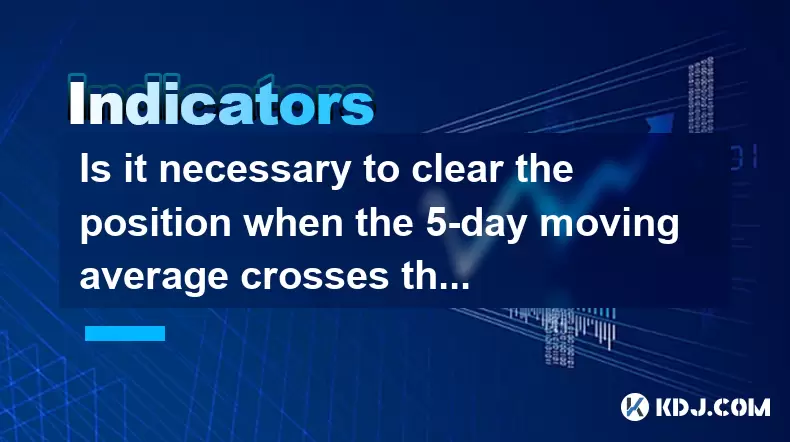
Understanding the 5-Day and 10-Day Moving Averages
In the realm of technical analysis within the cryptocurrency market, moving averages play a crucial role in identifying trends and potential reversal points. The 5-day moving average (MA) and 10-day moving average are two of the most commonly used short-term indicators by traders. These tools smooth out price data over a specific number of days, allowing traders to visualize momentum and direction.
The 5-day MA reacts more quickly to recent price changes, while the 10-day MA offers a slightly broader perspective. When these two lines intersect, it is known as a crossover signal—a key event that many traders monitor closely.
What Happens During a Crossover?
A crossover occurs when the 5-day MA crosses above or below the 10-day MA. This event is interpreted differently depending on the direction of the cross:
- Bullish Signal: When the 5-day MA crosses above the 10-day MA, it suggests upward momentum.
- Bearish Signal: When the 5-day MA crosses below the 10-day MA, it indicates downward pressure.
These signals can be powerful in trending markets but may produce false positives in sideways or choppy conditions. Therefore, relying solely on this indicator without additional context can lead to premature decisions, such as clearing positions unnecessarily.
Factors Influencing the Decision to Clear Positions
Several factors must be considered before deciding whether to clear your position upon a 5-day/10-day MA crossover:
- Market Volatility: Cryptocurrencies are inherently volatile, and short-term MAs can generate multiple crossovers during consolidation phases.
- Trading Strategy: If you're a scalper or day trader, acting swiftly on crossovers might align with your strategy. However, if you're a swing trader, waiting for confirmation from other indicators could be more effective.
- Volume Confirmation: High trading volume accompanying a crossover can increase its reliability.
- Support and Resistance Levels: Checking nearby support or resistance zones can help determine whether the crossover is likely to result in sustained movement.
Each of these elements plays a role in determining whether exiting a position is warranted or not.
How to Use Crossovers Effectively in Crypto Trading
To avoid making hasty decisions based solely on a 5-day/10-day MA crossover, follow these steps:
- Combine with Other Indicators: Pair the crossover signal with tools like Relative Strength Index (RSI), MACD, or Bollinger Bands to filter false signals.
- Set Stop-Loss Orders: Instead of clearing your entire position, use stop-loss levels to manage risk while staying in the trade longer.
- Monitor Timeframes: Analyze multiple timeframes—such as 4-hour, daily, and weekly charts—to confirm alignment in trend direction.
- Use Candlestick Patterns: Look for candlestick formations around the crossover point to gain insight into potential reversals or continuations.
- Track News Events: Sudden news or regulatory developments can cause erratic price movements that may falsely trigger crossovers.
By integrating these practices, traders can make more informed decisions rather than reacting impulsively to every crossover.
Common Mistakes Traders Make with MA Crossovers
Many novice traders fall into traps when interpreting moving average crossovers:
- Overreacting to Every Signal: Not all crossovers lead to significant moves; some are just noise in volatile crypto markets.
- Ignoring Market Context: Failing to assess the broader market environment can lead to poor timing and losses.
- Not Backtesting Strategies: Entering trades based on untested strategies can be risky. It’s essential to backtest your approach using historical data before applying it live.
- Neglecting Risk Management: Even if a crossover seems strong, risk per trade should remain consistent to protect capital.
Avoiding these pitfalls helps maintain discipline and improves long-term profitability.
Frequently Asked Questions
Q: Can I rely solely on the 5-day and 10-day MA crossover for trading decisions?
A: While useful, these crossovers should not be used in isolation. Combining them with other indicators enhances accuracy and reduces false signals.
Q: What timeframes work best with 5-day and 10-day MA crossovers?
A: Shorter timeframes like 1-hour or 4-hour charts are ideal for active traders, while daily charts suit those holding positions for several days.
Q: How do I differentiate between a real signal and a fakeout?
A: Watch for volume spikes, confluence with other indicators, and chart patterns near the crossover area to validate the strength of the signal.
Q: Should I exit my entire position at once when a bearish crossover occurs?
A: Consider scaling out gradually or adjusting stop-loss levels instead of liquidating completely, especially if the overall trend remains intact.
Disclaimer:info@kdj.com
The information provided is not trading advice. kdj.com does not assume any responsibility for any investments made based on the information provided in this article. Cryptocurrencies are highly volatile and it is highly recommended that you invest with caution after thorough research!
If you believe that the content used on this website infringes your copyright, please contact us immediately (info@kdj.com) and we will delete it promptly.
- Bitcoin Price Puzzle: Institutional Buying vs. Market Discrepancy Explained
- 2025-06-27 22:30:12
- Neo Pepe Coin ($NEOP): Certik Audit Success & Crypto Presales Heats Up
- 2025-06-27 22:30:12
- Bitcoin Price Prediction: Mixed Signals as BTC Eyes $110K
- 2025-06-27 22:50:11
- Coinbase's Bitcoin Futures Launch: A New Era for US Crypto Trading?
- 2025-06-27 22:35:11
- LUNC Price on Edge: Weekly Burn vs. Risky Pattern – What's Next?
- 2025-06-27 22:35:11
- SHIB, DOGE, and the Meme Coin Mania: What's Hot and What's Not?
- 2025-06-27 21:27:13
Related knowledge

Is it necessary to clear the position when the 5-day moving average crosses the 10-day moving average?
Jun 27,2025 at 07:21pm
Understanding the 5-Day and 10-Day Moving AveragesIn the realm of technical analysis within the cryptocurrency market, moving averages play a crucial role in identifying trends and potential reversal points. The 5-day moving average (MA) and 10-day moving average are two of the most commonly used short-term indicators by traders. These tools smooth out ...
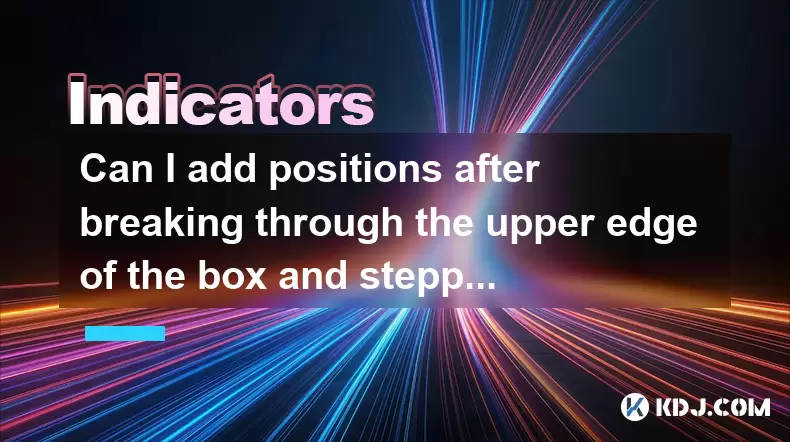
Can I add positions after breaking through the upper edge of the box and stepping back without breaking?
Jun 27,2025 at 09:56pm
Understanding the Box Breakout StrategyIn cryptocurrency trading, box breakout strategies are commonly used by technical analysts to identify potential price movements. A box, or a trading range, refers to a period where the price of an asset moves within two horizontal levels — the support (lower boundary) and resistance (upper boundary). When the pric...
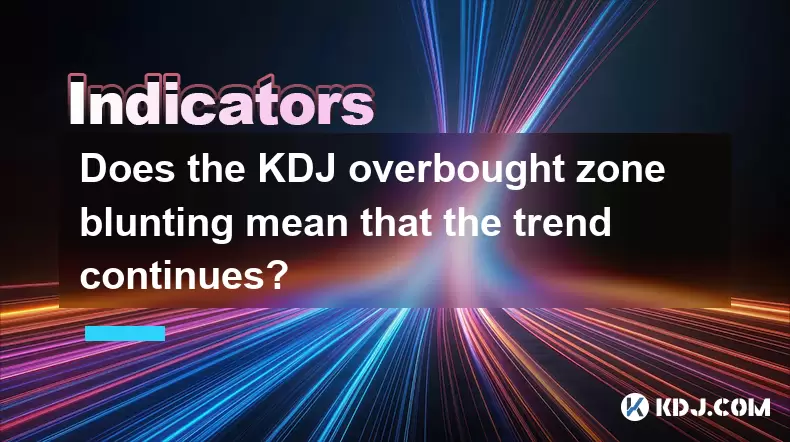
Does the KDJ overbought zone blunting mean that the trend continues?
Jun 27,2025 at 03:35pm
Understanding the KDJ Indicator in Cryptocurrency TradingThe KDJ indicator, also known as the stochastic oscillator, is a popular technical analysis tool used by traders to identify overbought or oversold conditions in asset prices. In the cryptocurrency market, where volatility is high and trends can change rapidly, understanding how to interpret the K...
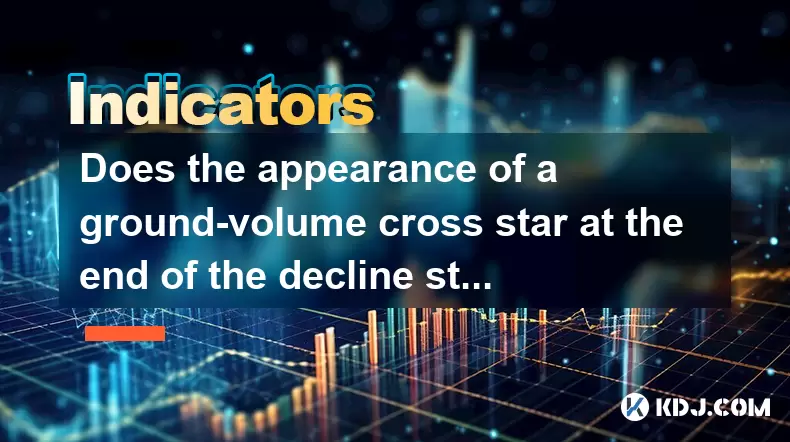
Does the appearance of a ground-volume cross star at the end of the decline stop the decline?
Jun 27,2025 at 10:35pm
Understanding the Ground-Volume Cross Star PatternIn technical analysis, candlestick patterns play a crucial role in identifying potential market reversals. One such pattern is the ground-volume cross star. This pattern typically appears at the bottom of a downtrend and is characterized by a small-bodied candle with long upper and lower shadows, accompa...
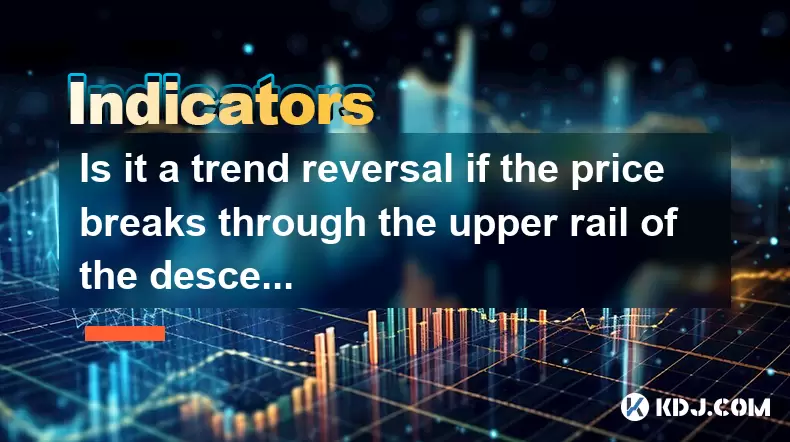
Is it a trend reversal if the price breaks through the upper rail of the descending channel and then steps back without breaking?
Jun 27,2025 at 05:35pm
Understanding the Descending Channel PatternA descending channel is a technical analysis pattern formed by two parallel downward-sloping trendlines, one acting as resistance and the other as support. This pattern typically indicates a continuation of a downtrend, where price action oscillates between these two boundaries. Traders often look for breakout...
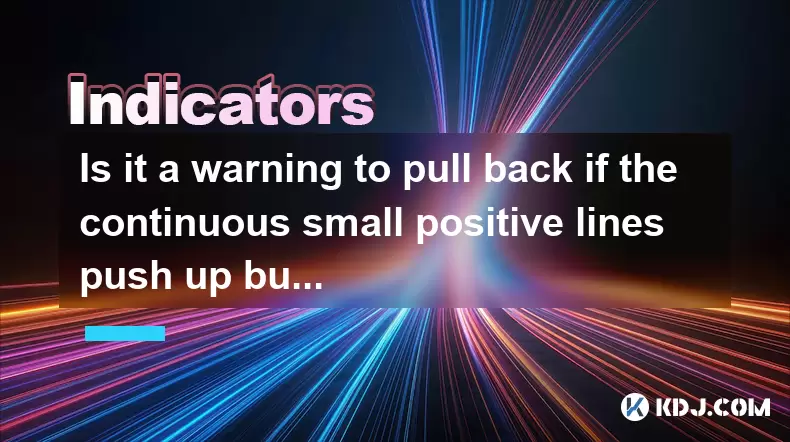
Is it a warning to pull back if the continuous small positive lines push up but the volume is insufficient?
Jun 27,2025 at 05:28pm
Understanding the Pattern: Continuous Small Positive LinesIn technical analysis, continuous small positive lines refer to a series of candlesticks where each candle closes slightly higher than its open. These candles usually have short wicks and indicate a gradual upward movement in price. Traders often interpret this pattern as a sign of steady buying ...

Is it necessary to clear the position when the 5-day moving average crosses the 10-day moving average?
Jun 27,2025 at 07:21pm
Understanding the 5-Day and 10-Day Moving AveragesIn the realm of technical analysis within the cryptocurrency market, moving averages play a crucial role in identifying trends and potential reversal points. The 5-day moving average (MA) and 10-day moving average are two of the most commonly used short-term indicators by traders. These tools smooth out ...

Can I add positions after breaking through the upper edge of the box and stepping back without breaking?
Jun 27,2025 at 09:56pm
Understanding the Box Breakout StrategyIn cryptocurrency trading, box breakout strategies are commonly used by technical analysts to identify potential price movements. A box, or a trading range, refers to a period where the price of an asset moves within two horizontal levels — the support (lower boundary) and resistance (upper boundary). When the pric...

Does the KDJ overbought zone blunting mean that the trend continues?
Jun 27,2025 at 03:35pm
Understanding the KDJ Indicator in Cryptocurrency TradingThe KDJ indicator, also known as the stochastic oscillator, is a popular technical analysis tool used by traders to identify overbought or oversold conditions in asset prices. In the cryptocurrency market, where volatility is high and trends can change rapidly, understanding how to interpret the K...

Does the appearance of a ground-volume cross star at the end of the decline stop the decline?
Jun 27,2025 at 10:35pm
Understanding the Ground-Volume Cross Star PatternIn technical analysis, candlestick patterns play a crucial role in identifying potential market reversals. One such pattern is the ground-volume cross star. This pattern typically appears at the bottom of a downtrend and is characterized by a small-bodied candle with long upper and lower shadows, accompa...

Is it a trend reversal if the price breaks through the upper rail of the descending channel and then steps back without breaking?
Jun 27,2025 at 05:35pm
Understanding the Descending Channel PatternA descending channel is a technical analysis pattern formed by two parallel downward-sloping trendlines, one acting as resistance and the other as support. This pattern typically indicates a continuation of a downtrend, where price action oscillates between these two boundaries. Traders often look for breakout...

Is it a warning to pull back if the continuous small positive lines push up but the volume is insufficient?
Jun 27,2025 at 05:28pm
Understanding the Pattern: Continuous Small Positive LinesIn technical analysis, continuous small positive lines refer to a series of candlesticks where each candle closes slightly higher than its open. These candles usually have short wicks and indicate a gradual upward movement in price. Traders often interpret this pattern as a sign of steady buying ...
See all articles























































































